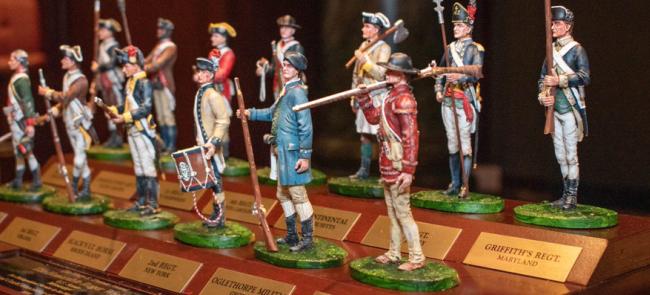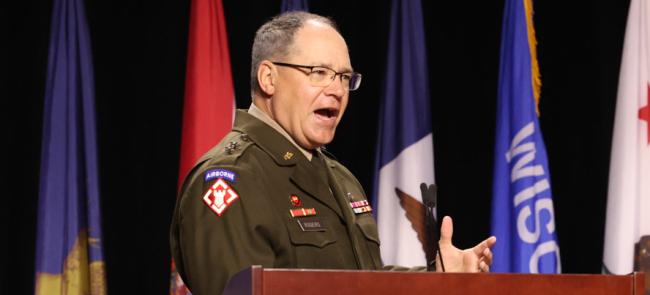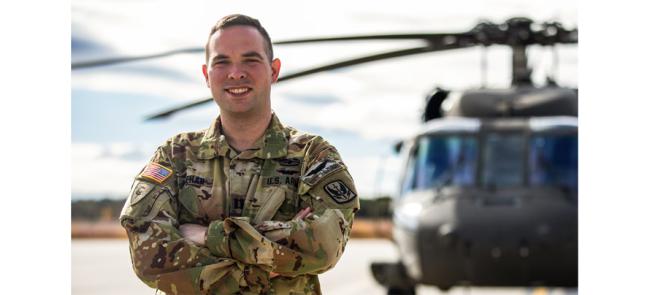
Writing the Book on Urban Warfare
Combat in a city is a soldier’s worst nightmare — fighting block to block, building to building and sometimes even room to room, with grave danger potentially around every corner, from above and below.
But operations on urban terrain are sometimes necessary. Cities often have critical strategic value. They are seats of power and centers of commerce. The conflict in Ukraine underscores some of the realities.
Hampered by poor planning, supply shortages and unexpectedly stiff resistance, Russia’s initial advance was slow to reach Kyiv, the Ukrainian capital, giving its defenders time to prepare.
Soldiers positioned heavy weapons, ammunition and other supplies around the city. They also used trucks, concrete blocks and tires to form barricades to barricade the invaders.
Meanwhile, ordinary citizens of all ages took up arms or filled old wine bottles with flammable liquid, creating Molotov cocktails.
In short order, a beautiful European metropolis of nearly 3 million people had become a series of deathtraps for invaders. And the Ukrainians had already proven they would fiercely defend their homeland.
Recognizing they lacked the numbers and supplies to take the city of 300-square miles, let alone hold it, the Russians stopped at the outskirts of Kyiv and pivoted elsewhere.
In the southeastern part of the country, a couple thousand Ukrainian troops held off a much larger Russian force in the port city of Mariupol for weeks. Their Alamo was a steel plant with a vast network of underground tunnels.
The Russians ultimately prevailed, but at great cost. They suffered significant losses of personnel and killed hundreds, maybe thousands, of civilians with the world watching.
The siege of Mariupol demonstrates the complexities of dislodging organized and determined defenders from an urban area. It also shows how superior numbers and technology can evaporate in the concrete jungle.
None of this surprises U.S. military planners. They also know it’s not if, but when American troops will again have to conduct operations on urban terrain, especially with two-thirds of the world’s population soon living in or near big cities, per current trends.
Enter the California Army National Guard’s 40th Infantry Division headquartered at the Joint Forces Training Base at Los Alamitos, just south of Los Angeles. Division leaders will host a training course for planners this summer they hope will shape urban doctrine for years to come.
“In my mind, this is the most challenging environment we could possibly imagine,” says Maj. Gen. Laura L. Yeager, the division commander. “If you can prevail there, any other environment will be much simpler.”
The Urban Operations Planners Course is set for July 10-16. It unfolds mostly at JFTB Los Alamitos, with a walk-through the National Training Center’s Razish compound, a mock city at Fort Irwin, California, NTC uses to simulate urban combat for visiting brigades.
The course is open to Army, Air Force and Marine Corp planners. Officers from Canada, Germany, the U.K. and other allied nations are also expected to attend.
What separates the 40th ID’s program from earlier exercises is an emphasis on brigade- and division-level planning.
“The reason why a lot of people are interested in this is that population centers are becoming increasingly dense,” Yeager says. “The bottom line is we don’t get to pick where and when we engage in combat, so we need to be ready.”
Cities are strategic objectives. They are the seat of political power and the economic engine of nations.
—John Spencer, the chair of urban warfare studies at the Modern War Institute at the U.S. Military Academy in West Point, New York
MULTIPLE 40TH ID members, including Yeager, credit Brig. Gen. Rob Wooldridge, the deputy division commander, with inspiring the division’s urban operations initiative.
His fascination with urban terrain dates back to 1994, when he deployed with the 82nd Airborne Division to Port-au-Prince, Haiti, for Operation Uphold Democracy. The city’s high rises and dense population convinced him he needed more urban operations education.
“I had only trained in the forests of Fort Bragg [North Carolina],” Wooldridge says. “When I was there [in Haiti], I didn’t really feel at the time I was sufficiently trained to operate in a city among such a huge civilian population and all the complexities.”
More than 25 years later, his current division participated in a command post exercise with an eye-opening urban scenario. It wasn’t difficulty the 40th ID experienced taking a port in the middle of a simulated city, but ease.
“It seemed very unrealistically easy for us to both defeat the enemy and occupy that city,” Yeager says. “It got us thinking — there’s probably not enough attention being paid to large-scale combat operations in very large cities.”
During November 2020, a podcast made Wooldridge realize the division could become the U.S. armed forces’ urban experts. It was hosted by retired Col. John Spencer, the chair of urban warfare studies at the Modern War Institute at the U.S. Military Academy in West Point, New York.
“He was like, ‘Hey, what the U.S. Army really needs is a brigade or a division to specialize in urban warfare just like we have entire divisions that specialize in jungle, airborne or air assault tactics,’” Wooldridge recalls. “‘This division would focus on learning urban and share those lessons across the entire U.S. military.’”
Wooldridge lists many factors making the 40th ID ideal urban warfare specialists. First, much of the division staff lives and works in or near Los Angeles, a metro area of more than 18 million people.
“We have urban planners,” he says. “We have civil engineers. That’s their job to understand the urban environment and live, work and breath in that environment.”
“We would be the perfect unit to pick up the mantle on urban operations and work toward a specialized school,” Wooldridge adds. “As a division, I thought something useful would be to have a course for staff officers and noncommissioned officers to plan successful urban operations.”
And being from Los Angeles, the division headquarters staff understands better than most how massive an undertaking combat would be in some of the world’s megacities — urban areas with populations of more than 10 million people.
“Put 1,000 soldiers in a city like Los Angeles and it barely makes a dent,” Yeager says.
In October 2021, the 40th ID conducted a seven-day course on urban operations gauging interest in the topic military wide. The content covered topics like subterranean combat, with division staff surveying attendees afterwards on the subjects resonating with them.
The result is July’s curriculum, which Wooldridge sees anchoring the military’s urban warfighting playbook. Like the 101st Airborne Division’s “Gold Book” guides air assaults, Wooldridge imagines the 40th ID’s “Gray Book” directing urban maneuvers.
Spencer says urban conflict involves three military difficulties.
First, physical structures ranging from skyscrapers to subways create unpredictable situations for even experienced soldiers.
“Urban terrain is often called ‘the great equalizer,’” says Spencer, now the 40th ID’s urban warfare training director. “Whether you’re a good guy or a bad guy, anybody who gets to the urban terrain first, unlike all other terrain, the buildings provide natural defensive qualities that you would have to spend years building in other terrains.”
Spencer lists civilians as the second challenge urban warfighting presents. They provide combatants numerous moral, legal and strategic burdens.
The infrastructure supporting citizens, Spencer notes, is the final urban obstacle. He suggests militaries must avoid damaging — or fix — infrastructure like roads for urban success.
“Cities are strategic objectives,” he says. “They are the seat of political power and the economic engine of nations. Militaries want to predict the operations, like the impact of the second- and third-order effects. It’s the effects on the city itself, on the region, on the nation and frankly today, the globe.”
THE 40TH ID’S COURSE marks the military’s latest attempt at better understanding urban warfare.
Before becoming chairman of the Joint Chiefs of Staff in 2019, Gen. Mark A. Milley envisioned future military engagements involving urban arenas.
“It will be fought, in my opinion, in urban areas,” he said in 2017. “That has huge implications for the United States Army.”
“We are going to have to … optimize the Army for urban warfare,” added Milley, then the Army’s chief of staff. “The Army will definitely have to organize differently, probably into smaller, more compartmented groups.”
The fiscal 2020 National Defense Authorization Act proposed the Army establish two urban warfare centers.
The first facility would be “dedicated to the study and research of urbanization, megacities, urban warfare, and military operations in dense urban environments.” The second installation would train soldiers on “advanced skills to fight, survive, and win in urban operating environments at the brigade level and higher.”
While both facilities remain unrealized, Wooldridge urges Congress to prioritize the idea.
“There’s never been a formalized course for understanding and planning large-scale urban operations,” he says. “I would hope the Congress would put some money to what they put in the NDAA and that the 40th ID could host that center for the Army.”
“It’s not easy and it’s not sexy,” Wooldridge adds of urban warfare. “But it’s certainly something that needs to get done or we’re going to pay the price.”
For the Guard, urban operations cover more functions than battling the enemy in cities. Reducing civil unrest also fits the equation, as does addressing natural disasters like fires and floods, all of which are Guard missions.
What does the 40th ID hope happens after the Urban Operations Planners Course? Besides the Gray Book on urban warfare, the goal is a community of interest on the topic.
Wooldridge says this “coalition of the willing” would extend beyond the Guard to academia, think tanks, other military components and even U.S. allies.
“These are people who recognize that this is a tough thing, recognize that we need to get smarter on this,” he states. “And we’re all pulling together. The interest is out there. It just needs to be harnessed.”
Together, this community of interest and the “Gray Book” would ensure America’s armed services have strong standard operating procedures for urban environments.
For example, Wooldridge says soldiers should carry chainsaws, grappling hooks, ladders and other unconventional tools given urban terrain’s unusual characteristics.
“When we’re talking about task organization, we’re trying to give practical tools to these planners,” he says. “At the unit, division or brigade level, they’ve got to allocate the correct amount of armor, engineers and artillery to get this combined arms effect.”
“Hopefully, this ‘Gray Book’ will be a just-in-time handbook that you’ll be able to pull out,” Wooldridge concludes. “But we’re going to try giving you this master list of things so you can know the difference between fighting in an open area and fighting in urban.”
Mark Hensch is the NGAUS senior writer/editor. He can be reached at [email protected].
Additional Resources
More information on the Urban Operations Planners Course, including a daily agenda, is available at https://calguard.ca.gov/40id-urban-warfare. The site is also an online clearing house of information on military operations on urban terrain. It includes the latest news and information, along with links to articles from military journals on historical battles conducted in cities worldwide, such as Mosal, Iraq, in 2017; Mogadishu, Somalia, in 1992; and Hue, South Vietnam, in 1968. There are also additional links to current doctrine and related context.



